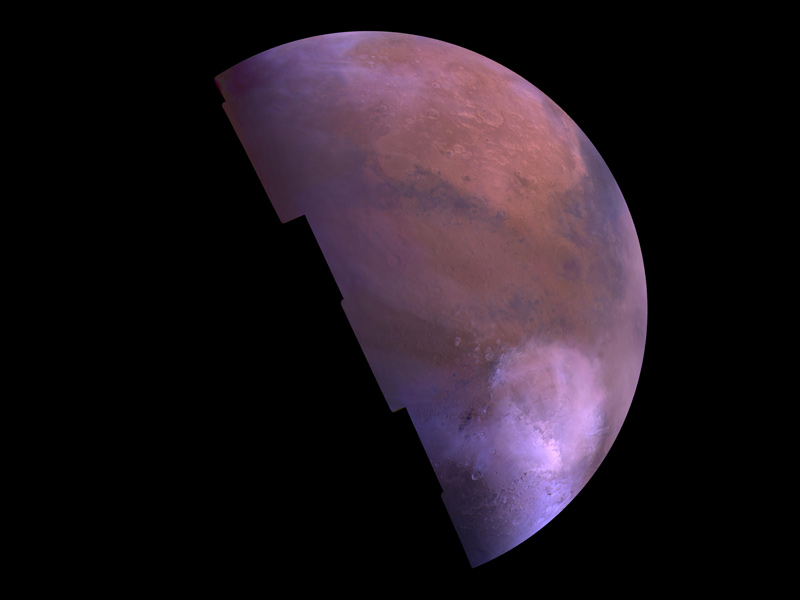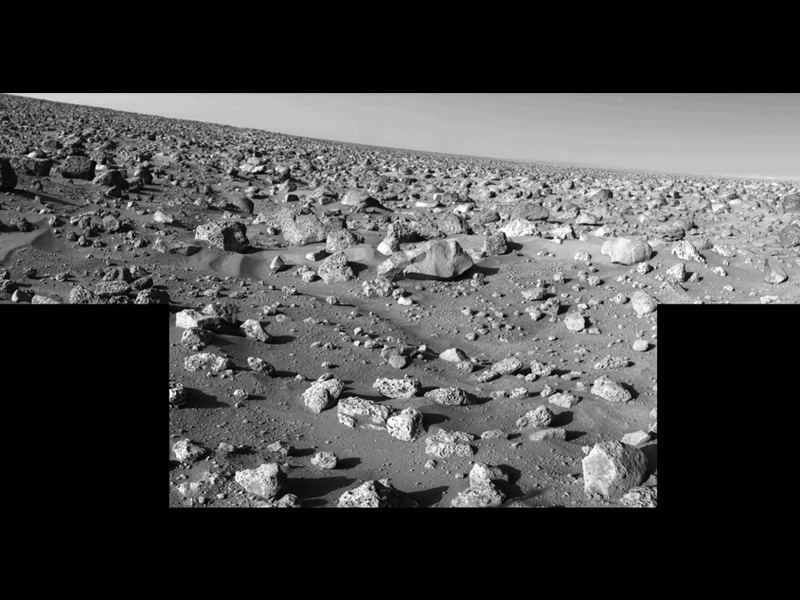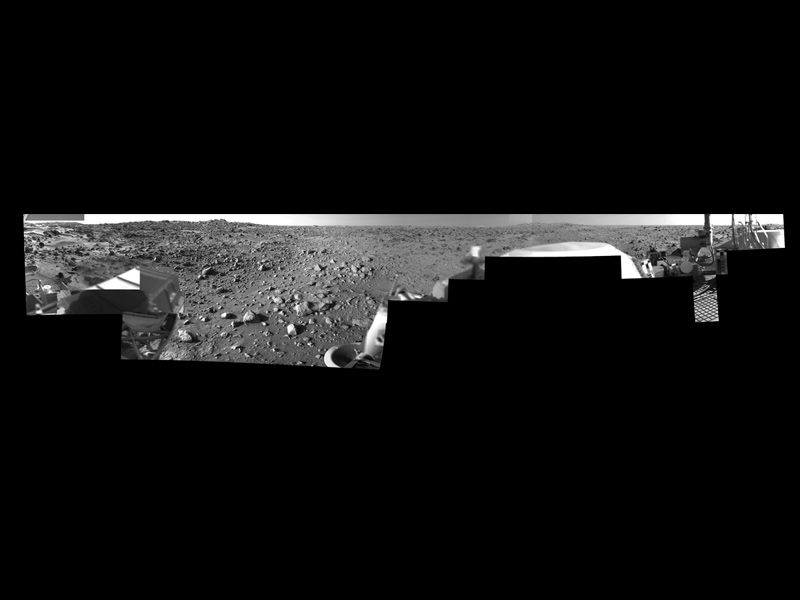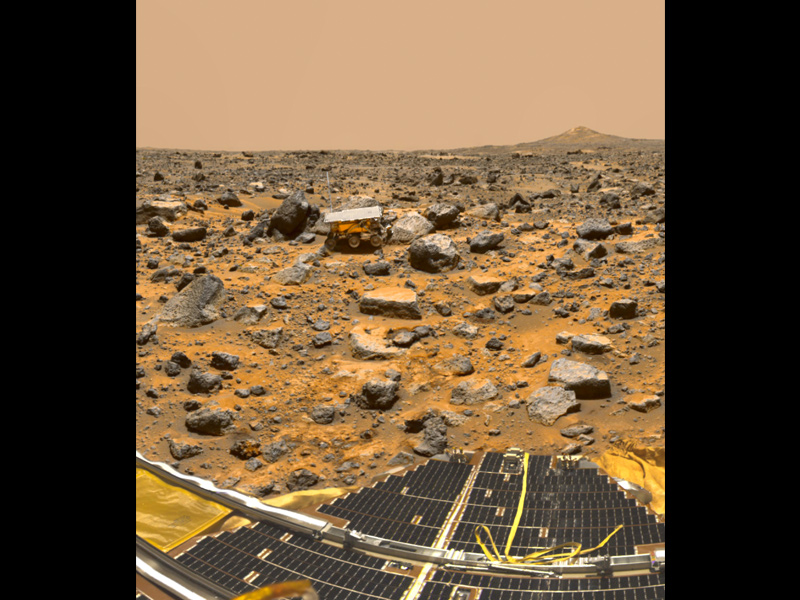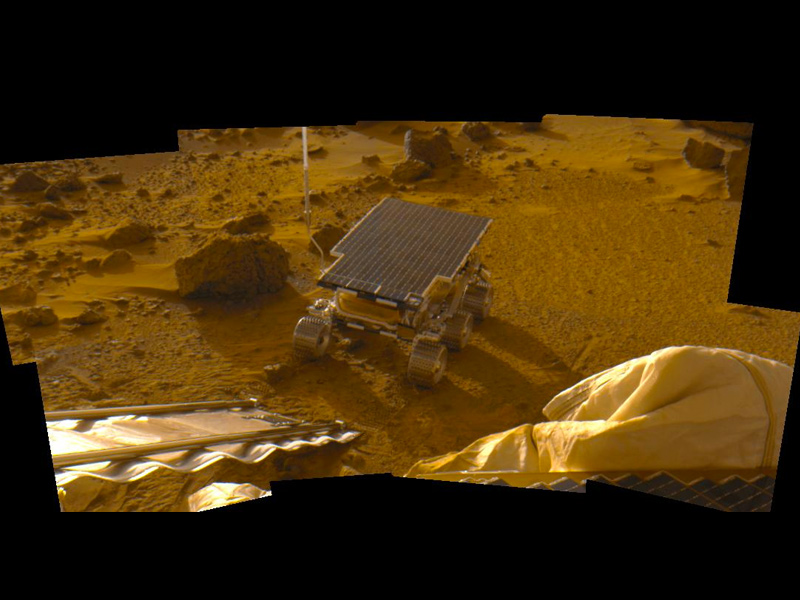Mars
The Red Planet is actually many colors. At the surface, we see colors such as brown, gold, and tan. The reason Mars looks reddish is due to oxidization – or rusting – of iron in the rocks, regolith (Martian “soil”), and dust of Mars. This dust gets kicked up into the atmosphere and from a distance makes the planet appear mostly red. Interestingly, while Mars is about half the diameter of Earth, its surface has nearly the same area as Earth’s dry land. Its volcanoes, impact craters, crustal movement, and atmospheric conditions such as dust storms have altered the landscape of Mars over many years, creating some of the solar system's most interesting topographical features. A large canyon system called Valles Marineris is long enough to stretch from California to New York – more than 3,000 miles (4,800 kilometers). This Martian canyon is 200 miles (320 kilometers) at its widest and 4.3 miles (7 kilometers) at its deepest. That's about 10 times the size of Earth's Grand Canyon.
